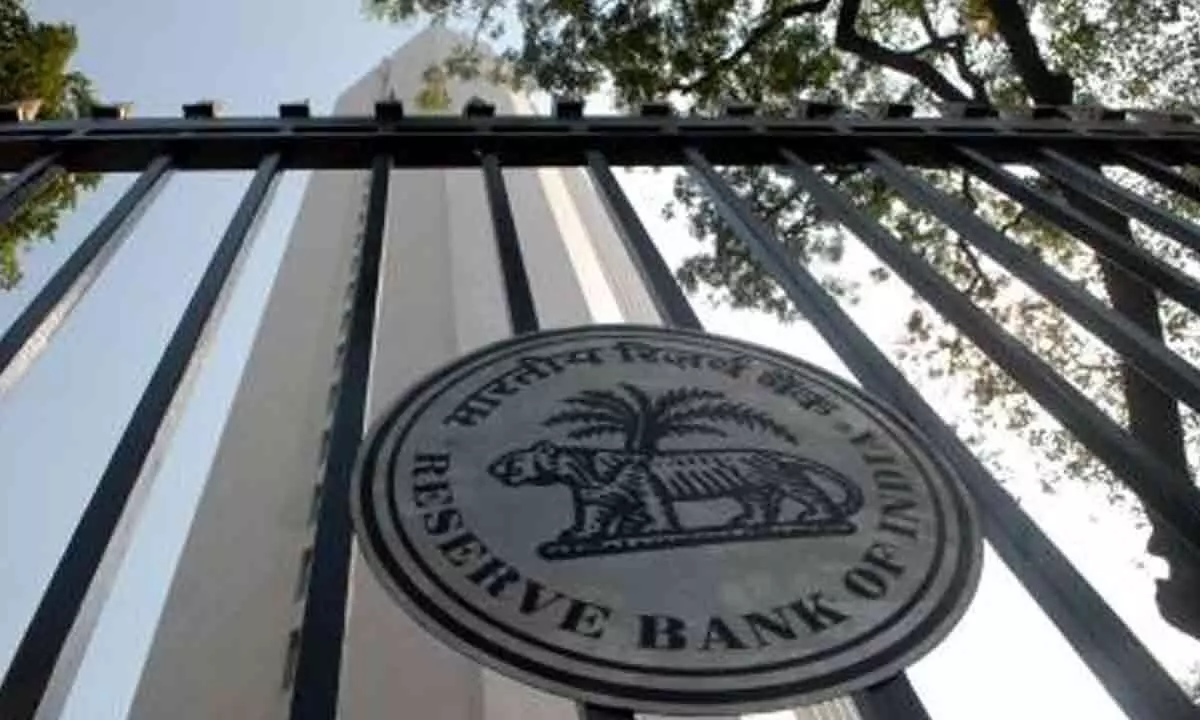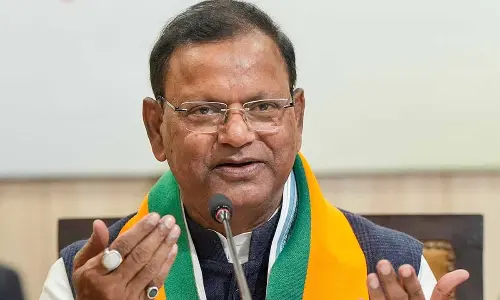RBI-MPC to continue with repo rate
Share :

Considering the elevated inflation rate the Reserve Bank of India’s (RBI) Monetary Policy Committee (MPC) will continue with the 6.5 per cent repo rate, said senior economists.
Chennai: Considering the elevated inflation rate the Reserve Bank of India’s (RBI) Monetary Policy Committee (MPC) will continue with the 6.5 per cent repo rate, said senior economists.
However there are differing views on whether RBI would change its stance to `neutral’ from ‘withdrawal of accommodation’.
The repo rate is the rate at which the RBI lends to the banks.
The MPC meeting began on Tuesday and it decision will be announced coming Thursday.
“Prior to the announcement of the budget it would have appeared to be a no-brainer that a status quo on both repo rate and stance would be agreed to as inflation remains elevated at 5.7 per cent as of December,” Madan Sabnavis, Chief Economist, Bank of Baroda said.
He said that this can improve in January but will definitely not give form comfort of inflation being under control as it is driven more by food inflation.
“Therefore there is a very high likelihood that the repo rate will remain unchanged again. In fact, going by the RBI forecasts on inflation for the next year, it can be seen that the number will remain above 5 per cent for Q1 of FY25 and come down to 4 per cent in Q2 only. After this period, it would increase to 4.7 per cent in Q3,” Sabnavis said.
He said that there is reason to believe that a rate cut can be considered only in Q2-FY25 after there are positive indicators on the inflation and monsoon fronts.
According to CARE Ratings, the overall economic outlook remains upbeat despite challenges in specific sectors. RBI is likely to revise its growth projections upward. While headline inflation is elevated, primarily due to rising food prices, core inflation remains relatively subdued.
The systemic liquidity has consistently remained in deficit since early December 2023, and money market conditions remain tight. The RBI will likely continue to support liquidity conditions through variable-rate repo auctions (VRR), potentially considering an extension in their tenor, CARE Ratings said.
“We expect the MPC to maintain the current interest rates during the forthcoming policy meeting,” the credit rating agency said.
As regards the stance, the credit rating agency said there is a potential for a shift to "neutral" in the February policy.
“MPC will consider cutting rates in Q2FY25 when headline inflation inches closer to the 4 per cent mark,” CARE Ratings said.
According to Sabnavis, the stance of ‘withdrawal of accommodation’ appears to be very likely this time too. But the market is looking for signals to justify a change to ‘neutral’.
Sabnavis said that the idea for change in stance stems from the Union Budget or Interim Budget talking of a lower gross borrowing programme for FY25. Things changed immediately after the Budget was announced like:
The yield on 10-year bonds came down to 7.04% and is currently at 7.06-7.08 per cent which is lower than the pre-Budget yields of 7.12-14 per cent.
The overall liquidity in the system has improved which can be due to the government spending as durable liquidity has reduced with cash balances of the government coming down. The second supplementary budget introduced yesterday also hints at a faster pace of government spending from now onwards.
The RBI is now conducting variable rate reverse repo (VRRR) auctions to absorb excess liquidity.
At the system level, there is definitely pressure on liquidity. This can be seen by the fact that while growth in deposits is much higher than last year on YTD basis as of January 12th, the increase in credit and investments at Rs 22.25 lakh crore is higher than that of deposits at Rs 18.20 lakh crore. In terms of growth rates on YTD basis, credit is at 12.1 per cent (11.7 per cent last year), deposits at 10.1 per cent (7.3 per cent) and investments at 9.1 per cent (10 per cent), Sabnavis said.
“Under these conditions there is some part of the market segment that believes that a change in stance is possible, though we believe that this will not be the case. The fact that the corridor of call rates is being maintained at between repo and MSF rate, is indicative of the fact that the withdrawal of liquidity position would continue,” Sabnavis remarked.
The State Bank of India (SBI) in its report said the RBI will not change the repo rate and would also continue with the ‘withdrawal of accomodation’ stance.



















